From Chaoyangmen’s Galaxy SOHO to Guangzhou’s Opera House, China’s iconic buildings are indelible marks on the country’s cityscapes. The last decade, especially, has seen a proliferation of otherworldly structures, and in 2016, China’s State Council said that new urban planning guidelines would forbid the construction of “bizarre” and “odd-shaped” buildings that lacked character or cultural heritage.
But for Kris Provoost, the buildings are more than a fascination. Having lived in China for over seven years, and worked at firms like Zaha Hadid Architects and Buro Ole Scheeren, the Shanghai-based architect is a firsthand witness to the country’s construction boom. The Belgium native brings his keen designer’s eye to his ongoing architecture photography project ‘Beautified China,’ photos of which can be seen here. We chat with Provoost about the superficiality of iconic buildings and why the CCTV Headquarters is so extraordinary.

Bund SOHO, Shanghai (GMP Architekten)
What was the inspiration behind your ‘Beautified China’ photo series?
'Beautified China’ is a photo collection I’ve created over the past eight years. It documents my footsteps through the country, and sort of encapsulates my career as both an architect and a photographer. After years of working and living here, I could see certain trends developing. I was photographing the iconic structures built by “starchitects” throughout China after the country’s massive building boom. Some of the buildings overtook cities, redefined them, or established them. It was clear that there was a shift from iconic Chinese architecture toward subtler regeneration interventions, and I was documenting it. So, ‘Beautified China’ has become an overview of a period that will long be remembered in China’s architectural scene.
Besides being a status update of the iconic architecture boom in China, the series is also very much a research project. My work as an architect and my photography are very complementary in that sense. Both passions influence each other.
Why did you choose to focus on just a slice of each building?
Taking the buildings out of context, all that’s left is the different shapes, textures, patterns and colors, so it’s easier to focus and see what makes the building stand out. However, architecture is all about context and how it sits in the city. [As] these elements are rather difficult to truly capture in photography, I’d rather use video to document the [full] architecture. So, in this photoseries I focus [more] on the aesthetics.
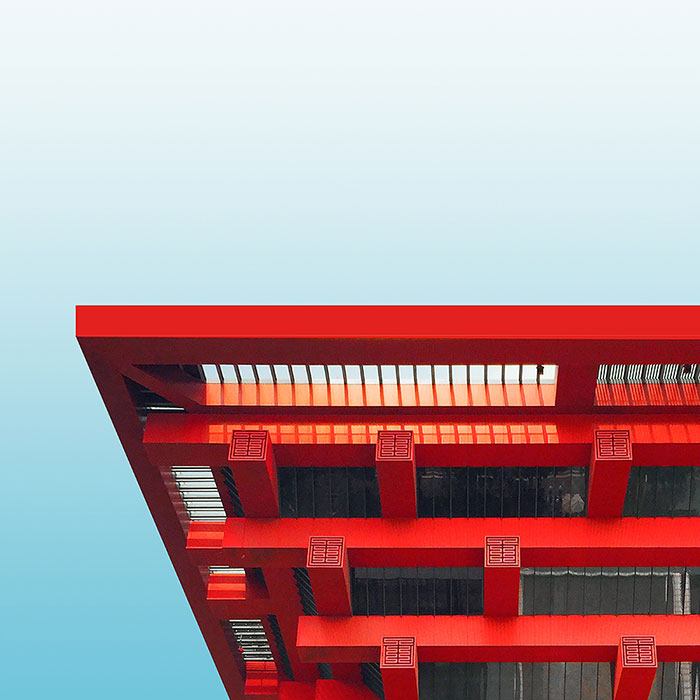
China Pavillion at Expo 2010, Shanghai (He Jingtang)
I went for a rather strong blue tone in the pictures to camouflage the real conditions and give a much ‘fresher’ look. As we all know, China has a serious smog problem.
Indeed. Do you have a favorite building in Beijing and in China?
My all-time favorite in Beijing – and China in general – is undoubtedly the CCTV Headquarters by OMA/Rem Koolhaas and Ole Scheeren. I lived and worked close by for many years, [and] it amazes me every time I look at it. What makes it so special? It’s a unique project, from an engineering point of view, but also from a [visual] point of view. There are two defining moments, for me, which showed the impact and uniqueness of this colossal building. I will never forget riding on the [Third Ring Road] at golden hour, and seeing the sunrays peek through the large opening. No building plays better with sunrays than the CCTV Headquarters. Another defining moment for me was seeing the backlit profile rise up when the first light of day appeared after an intense all-nighter at the office.
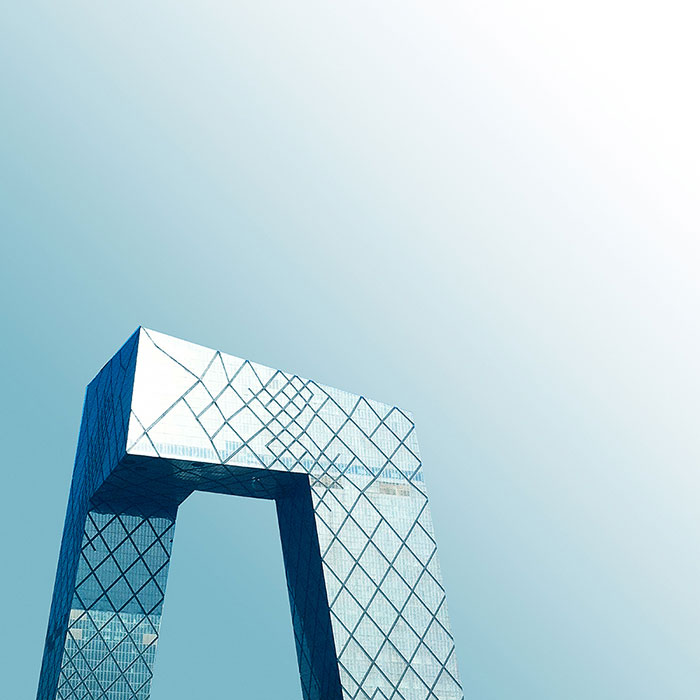
CCTV Headquarters, Beijing (OMA/Rem Koolhaas and Ole Scheeren)
In the text accompanying your photo essay you write: “Nowadays architects or visitors in general know better where that new Steven Holl or Zaha Hadid is in a city, [instead of where an] ancient temple is located. Can this be called success or just superficiality?” Does it have to be one or the other?
It’s interesting that iconic architecture sort of elevates itself from architecture’s main purpose of serving its users. Much like the Guggenheim made Bilbao famous, and became an expression on its own [Editor’s note: the ‘Bilbao effect,’ which denotes how the Guggenheim museum revitalized the Spanish city, and is now used in general to describe the cultural impact of buildings on their respective cities], architecture in China draws people to certain areas or even can establish new districts.
For example the Wangjing SOHO project, designed by Zaha Hadid, sort of gave life to the Wangjing area. While there were already many things happening in Wangjing, [the SOHO building] sort of gave a reason to hop on a quick trip there – at least for architects or architecture enthusiasts. Higher quality residential and office buildings were erected adjacent to it. But, as a consequence, it also made the housing prices skyrocket, as the area became a well sought after place to live.
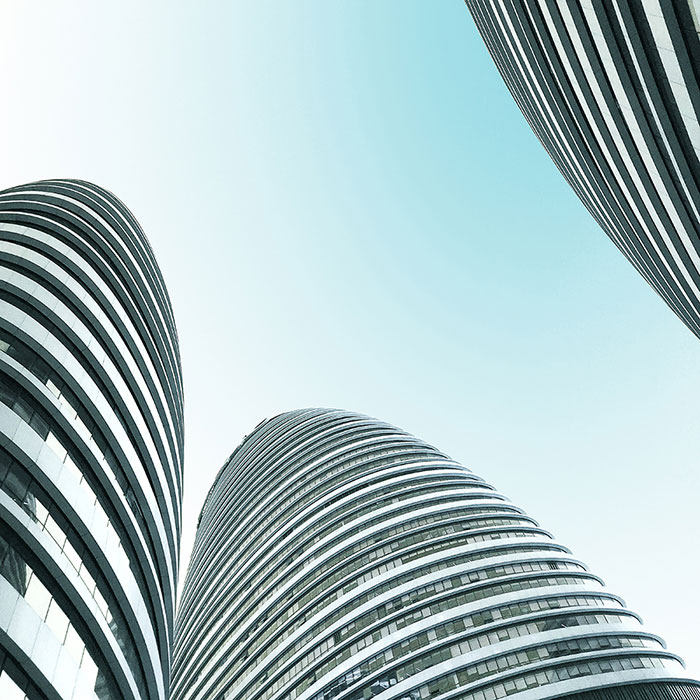
Wangjing SOHO, Beijing (Zaha Hadid Architects)
In a way, this type of architecture is a gift for the area, but also a poison for affordability. So, in many ways, iconic architecture is seen as a success by group A, while it is despised by group B. On the other hand, it is also a superficial way of making a place become liked.
How do you envision the future of architecture in Beijing?
My observations show it will be less iconic, or at least I hope. Beijing has many qualities that should be cherished instead of being wiped away for another iconic building that could have been built anywhere else. The ‘iconic decade’ was a way of maturing the city, to get it ready for the next decade. The buildings are used for marketing purposes, [like] profiling the city in international media. Perhaps Beijing can try to uplift its own living quality for its millions of residents, instead of trying to appeal to visitors.
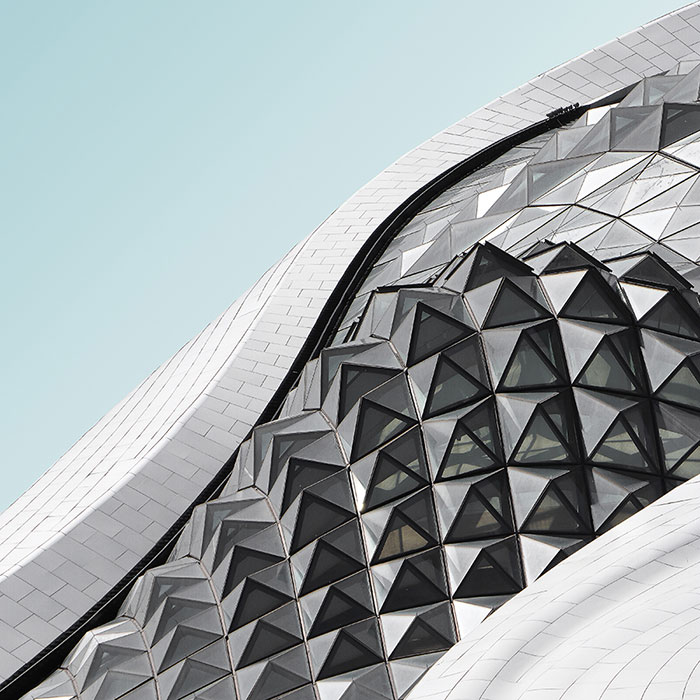
Harbin Grand Theatre, Harbin (MAD Architects)
In addition to ‘Beautified China,’ you also have a video project called #donotsettle. What’s it about?
#donotsettle is a project I run together with fellow architect Wahyu Pratomo. What we basically do is make short, fastpaced video about recently completed architecture. We visit the project and describe how the space feels, what the general atmosphere is like and how people interact with the project. We ask people what they think of the building and if it lives up to their expectations. When we started out, we tried to break the current architecture media ‘rules.’ While many architects talk and design with ‘the people’ in mind, it is very seldom questioned once the building is completed. Our aim is to give a more honest portrayal of the architecture. What you see in the video is how the building is on a normal day – rather than before it’s officially opened to the public, when conditions would be ideal. We hope that with our videos architecture enthusiasts can learn something new that makes them think and form opinions when they visit a building by themselves.
What are you working on right now?
Professionally I’m working on various projects across China. Regarding photo and video, I’m seeing growing interest in what we are doing with #donotsettle. Of course, I’m also always expanding my ‘Beautified China’ archive. There are still many buildings I would like to add to the set!

Guangdong Museum, Guangzhou (Rocco Design Architects)
To see more of Provoost’s work, visit his Instagram.





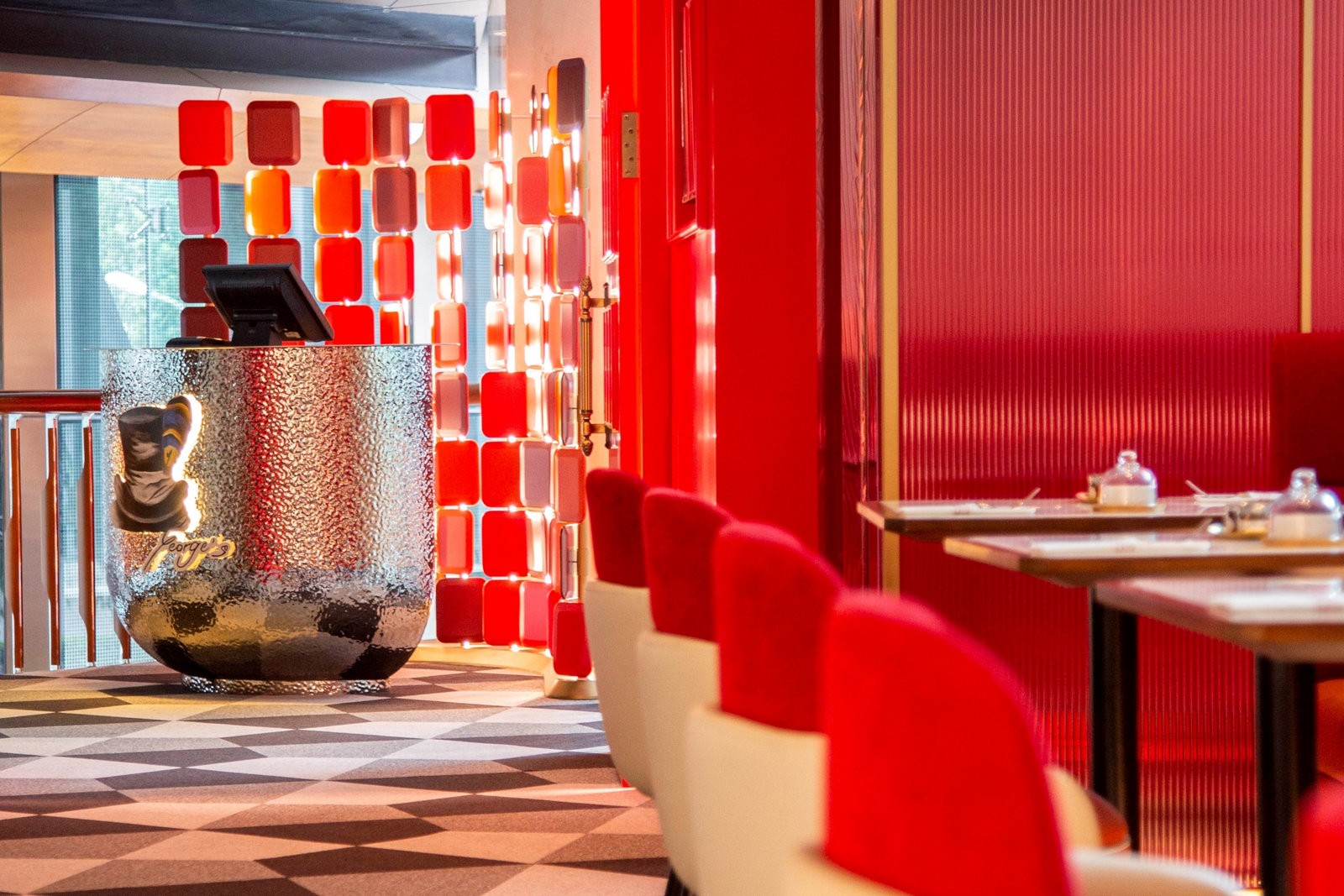

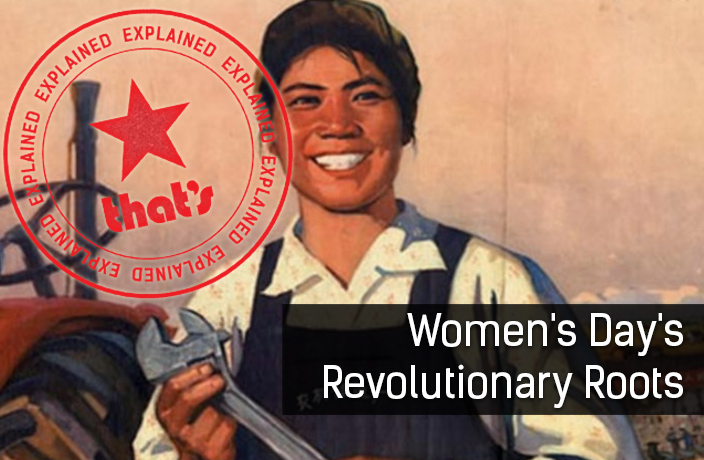














0 User Comments